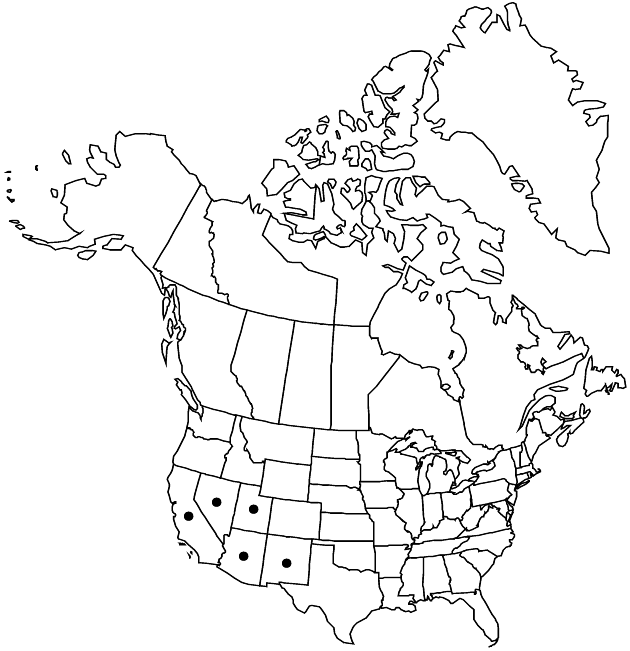Encelia virginensis
Bot. Gaz. 37: 272. 1904.
Shrubs, 50–150 cm. Stems with slender branches from bases, hairy, developing fissured barks. Leaves cauline; petioles 2–7 mm; blades gray-green, narrowly ovate to deltate, 12–25 mm, apices acute or obtuse, faces sparsely canescent and strigose. Heads borne singly. Peduncles canescent. Involucres 9–13 mm. Phyllaries narrowly ovate. Ray florets 11–21; corolla laminae 8–15 mm. Disc corollas yellow, 5–6 mm. Cypselae 5–8 mm; pappi usually 0, rarely of 1–2 bristlelike awns. 2n = 36.
Phenology: Flowering Apr–Jun, Dec.
Habitat: Desert flats, rocky slopes, roadsides
Elevation: 500–1500 m
Distribution

Ariz., Calif., Nev., N.Mex., Utah.
Discussion
In the mountains of the eastern Mojave Desert in California, Encelia virginensis may intergrade with E. actoni at higher elevations, probably as a result of hybridization. Plants of E. virginensis in New Mexico may be adventive.
Selected References
None.